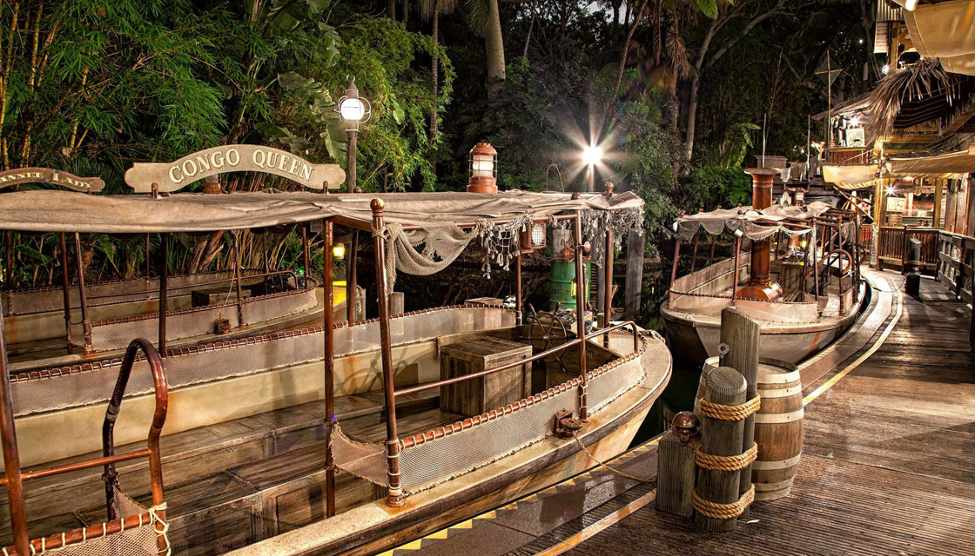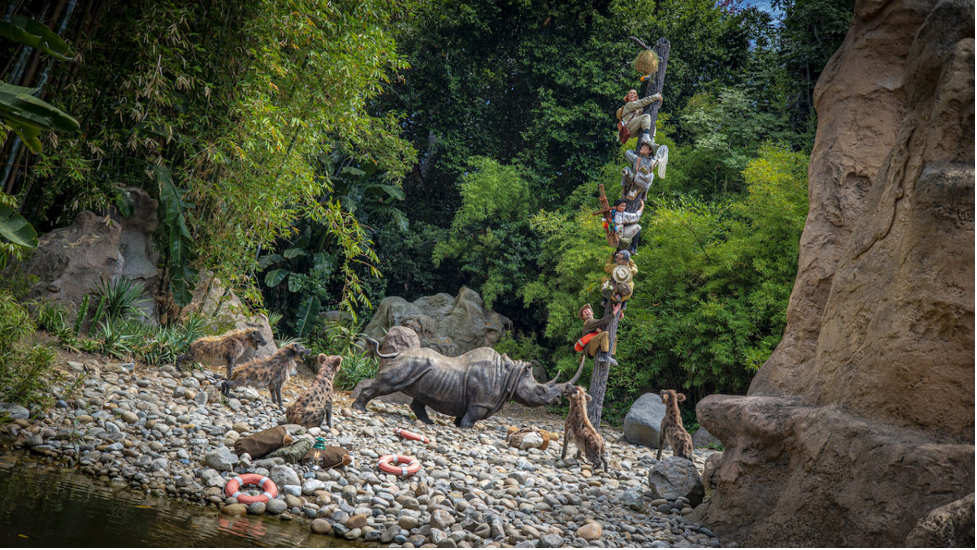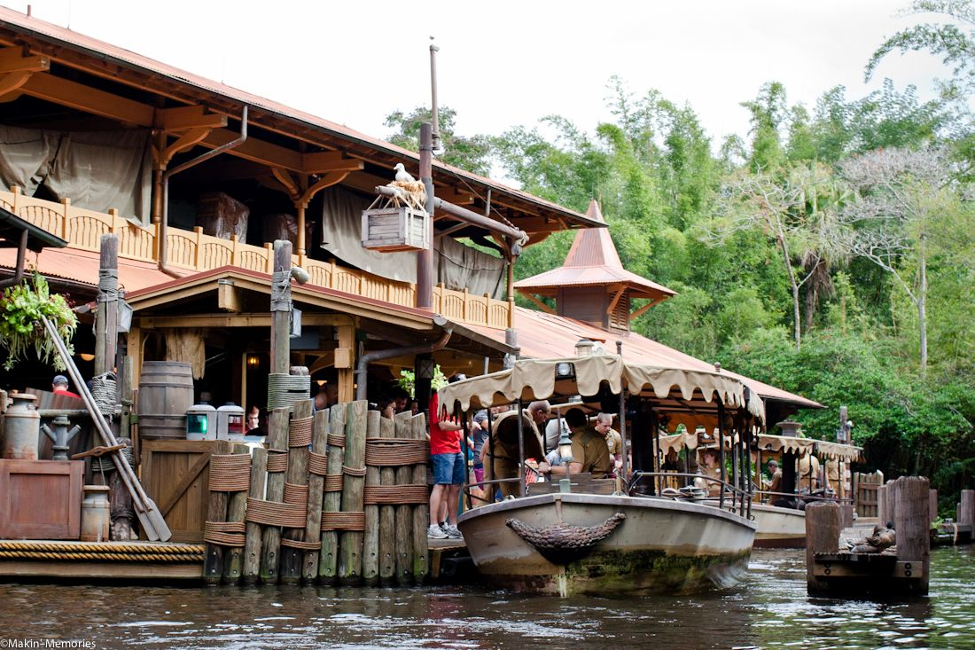"May I have your attention? Will the person who lost a roll of twenty dollar bills wrapped in a red rubber band please report to the lost and found. We have good news. We found your red rubber band!"
That’s my all-time favorite joke from The World Famous Jungle Cruise at The Walt Disney World Resort. I was a skipper for three years. Monday thru Friday, I managed learning technology and design for contact centers. Saturday and Sunday, I led thousands of guests on 10-minute excursions around the majestic rivers of the world. Spending 8-10 hours outside during the Florida summer surrounded by not-so-real animals and very real insects may not be your definition of an ideal weekend, but it was a lot of fun. (Figure 1)

Figure 1: Thousands of guests joined my tours, but no one bothered to put me on YouTube! :-(
The Jungle Cruise attractions at Walt Disney World in Florida and Disneyland in California are currently undergoing their biggest transformations in decades. Walt Disney Imagineering (WDI) is introducing a fresh, inclusive narrative with new characters and show scenes. As skipper alumni, I’ve been watching the changes take place via YouTube. It’s brought back lots of memories. The Jungle Cruise is a unique theme park experience because the cast member is the center of the story. Sure, the “animals” and scenery are great. But, if the skipper isn’t funny, the ride is a lot less interesting.
Anyone can be a skipper. There’s no audition process. You don’t need prior experience with public speaking or stand-up comedy. You just need to be willing to stand up there and tell the same jokes over and over again with a smile. The training team teaches you how to do the rest. New skippers “earn their ears” by covering a range of familiar workplace topics, such as safety, productivity, and customer service. They also have to memorize a 50-page script chock full of the world’s most famous dad jokes. There’s even a holiday version called The Jingle Cruise.
Let’s go on a virtual jungle cruise to celebrate the revitalization of this historic Disney attraction. Get ready to hear (read) some of my favorite jokes … along with right-fit tactics L&D can apply to make people funny. (Figure 2)

Figure 2: "Before we set out, let me give you a quick tour of the boat. (Pointing) That’s the top of the boat, and that’s the bottom of the boat. If the bottom of the boat becomes the top of the boat, swim."
Context
I had worked for Disney for 7+ years before I became a skipper. I had operated dozens of attractions and ridden The Jungle Cruise hundreds of times during my tenure. Most new hires don’t have this much experience in a new workplace. Even if they’ve visited as a guest in the past, they probably weren’t paying much attention to how things work.
Design learning experiences from the outside in. People must understand the context of their work and how their roles fit within the larger story. For example, I always brought new Star Tours cast members through the attraction as guests first. I asked them to call out parts of the experience they found meaningful. We then recalled their observations throughout the training program to reinforce the connection between their roles and the guest experience. (Figure 3)

Figure 3: "That’s why you never argue with a rhino. They always get their point across—in the end."
Confidence
Figuring out how to deliver scripted lines in ways that make people laugh is the hardest part of becoming a skipper. However, you can’t focus on being funny if you don’t know how to dock the boat. You can’t master your timing if you’re too concerned about your boat speed. And you can’t deliver a perfect jungle cruise if you don’t know how to operate the mechanical lift so a guest traveling in a wheelchair can get on and off the boat.
Always start with the fundamentals. Break down complex skills (driving a boat) into discrete knowledge and behavior expectations (operating the throttle, maintaining proper speed, etc.) Help people build confidence in their ability to execute the basics before introducing more challenging concepts. Make sure a person is comfortable driving a boat while facing forward before you ask them to do it backwards while telling jokes to a group of strangers.
"See that bamboo over there? It grows to be six storeys tall. Some people say it can reach seven storeys, but that’s a whole other story."
Personalization
How would you go about memorizing 50 pages of dialogue? Would you sit in a quiet room and read the script over and over? Would you ask someone to read the lines to you so you could repeat them back? Would you create flashcards with the setups on one side and the punchlines on the other? Would you draw a map of the jungle and fill it in with the jokes you decided to tell at each point in the journey? I’ve seen people mix and match all of these tactics and more while training in high-spiel roles.
Make room for personalization within the learning experience. Provide a comprehensive set of resources people can lean on while building their knowledge and skill. For example, include on-demand reference materials alongside eLearning so people have the option to spend additional time with the information. Arm trainers with a selection of activities they can use to address people’s individual needs. Use reinforcement tactics, such as question-based learning and scenarios, to assess people’s changing capabilities and focus on troublesome topics. (Figure 4)

Figure 4: "Oh no! It looks like the hippos are going to attack the boat. But don’t worry! I’ll scare them away like I did my last girlfriend. I LOVE YOU! I WANT A COMMITMENT!!!!"
Interleaving
It’s one thing to recite jokes while you’re sitting in a training room. It’s another thing to recite those jokes while operating a moving vehicle. People can get overwhelmed if you stack concepts too quickly. After all, humans can only take in and retain so much new information. On the other hand, if they don’t spend time putting the pieces together, they may struggle to apply what they’ve learned in real life.
Reduce cognitive load by starting with explicit knowledge and skill topics. Then, as people demonstrate rote mastery, shift from blocking to interleaving. Challenge people to apply multiple related skills together, such as keeping the boat in place while engaging in conversation. Help them make connections within their newly-acquired knowledge base that will aid in real-world performance.
"I love my job as a skipper. My parents are really proud … of my brother."
Practice
I wasn’t very funny during my first jungle cruise. Some people would argue I wasn’t very funny during my last one, either. Regardless, I got better quickly because my trainer made me practice. We went around that jungle over and over and over again until I felt confident enough to invite guests onboard. Once I had my lines memorized, we kept practicing so I could refine my delivery and find what worked best for me. Then, when I was on my own, I continued to receive feedback from managers who rode my boat every once in a while to observe my performance.
Make practice a required, embedded part of workplace learning. Provide realistic scenarios that challenge people to apply their knowledge within a safe environment. Continue to promote practice after training, especially for skills that are not consistently applied on the job. Build microlearning that fits into the workflow so people have ongoing opportunities to refine their skills. Apply tactics like spaced repetition and retrieval practice to make sure people retain and are ready to apply the right information in the moment of need. (Figure 5)

Figure 5: "As we arrive at the end of our journey, I’d like to point out our two docks. We have a dock on the right and a dock on the left. Some people get them confused. That’s why it's a paradox."
It would be awesome if training could automagically make people funny. It can’t. But a well-designed learning experience can certainly give anyone a chance. That’s because right-fit principles including context, confidence, personalization, interleaving, and practice help people connect with their roles, balance their learning needs, and focus on what matters.
My time as a skipper will always be special to me. I’m excited to see what WDI has come up with for the latest iteration of this classic Disney attraction. Thankfully, just like with Peloton, there are also plenty of insights L&D professionals can take away from the experience of helping skippers provide safe, engaging, often LOL hilarious tours of the jungle.
Hopefully, I’ll get the chance to visit the attraction again soon—this time without the khaki.
"If you enjoyed this column, my name is JD, and this is Learning Solutions Magazine. If not, my name is William, and this is Horse & Hound."
Be well.



